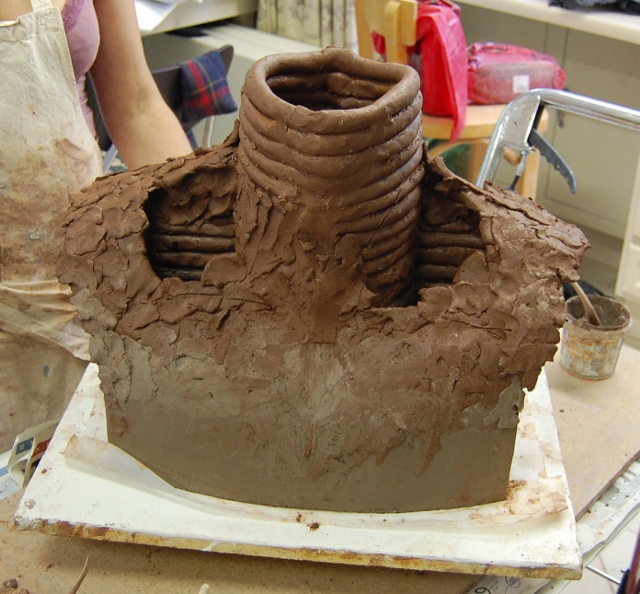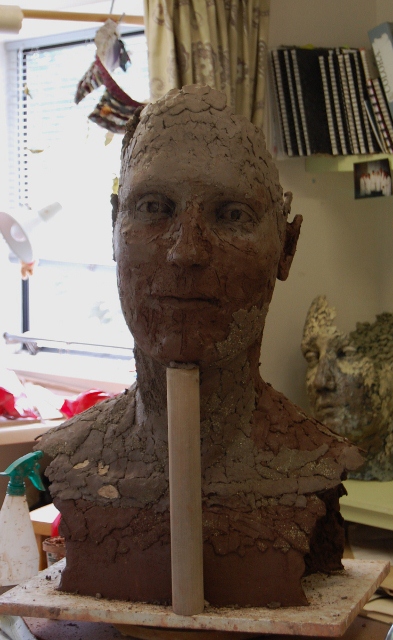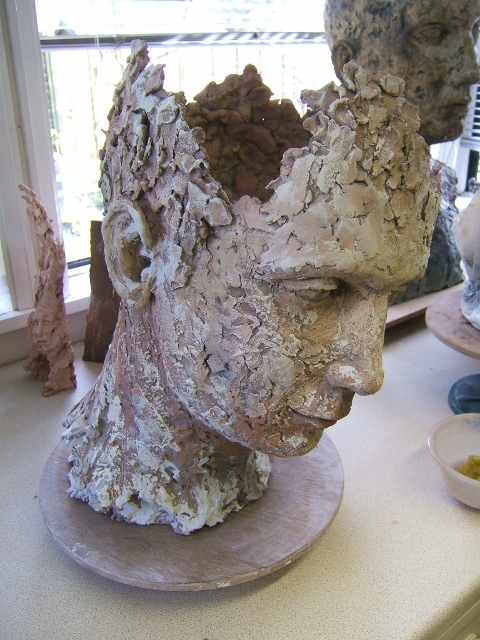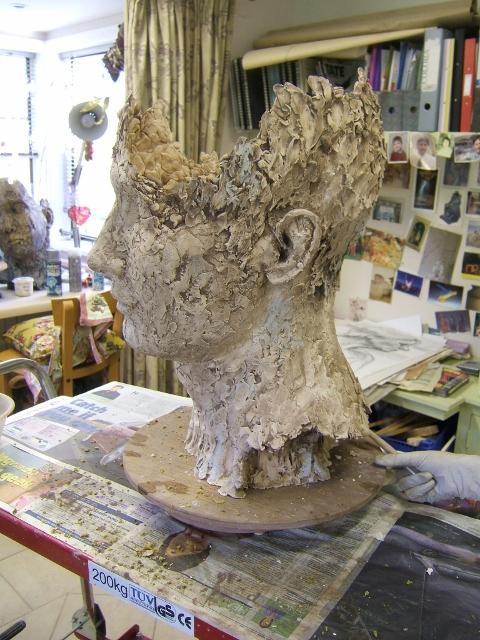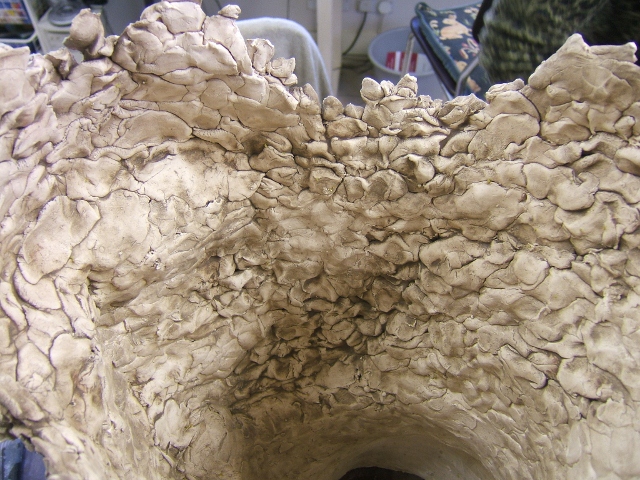Technique
Inspiration
The inspiration for Lesley’s work is primarily the human form, particularly the classical face. With her unique style, her work is a contemporary ‘take’ on a classical subject. She is also inspired by the drama and energy of coastal landscape with its large-scale rock formations and their constant erosion. It is this character that she uses when building the human heads/busts to describe both the fragility and fortitude of humanity. As a result the work looks earthy and weatherworn. The heads are often incomplete suggesting not only ancient classical ruins, but also our vulnerability – they are open to the elements and to the viewer.
Visits to the Jurassic Coastline, Dorset, during the winter have inspired her colour palette, making the work quite sombre. The different coloured clays are reminiscent of different coloured layers of strata and additions of porcelain create highlights. On her large pieces, Lesley uses porcelain on the surface of her work to give the impression of a handprint and to suggest the interplay of face and hand in human expression.
Whilst there is method underlying her building, Lesley believes that the versatility of clay enables her to build with a certain freedom to her style, allowing the work to evolve in its own right; the ‘randomness’ of clay helps make each piece subtly individual.
Technical
Lesley’s pieces are hand-built, hollow forms. The clay body used is called ‘crank’, which is designed for large, sculptural work and fires to high temperatures, making the work frost resistant and suitable for display outside.
She uses two colours of crank clay - buff and terracotta. The additions of porcelain rolled into the surface of this clay have a different shrinkage rate to the crank, which when fired causes intentional cracking on the surface.
The work is fired twice in an electric kiln – firstly, for 25 hours to 1050c; this slow firing is essential for large thick work. Once fired, coloured ‘slips’ are applied to the surface of the piece to bring out the texture. Lesley mixes these herself using colouring oxides, such as copper, cobalt and iron, to achieve the desired effect. The second firing to 1250c ensures that the clay and slips are fully matured and become ceramic.
Browse finished pieces for purchase in the Gallery.
.jpg)
